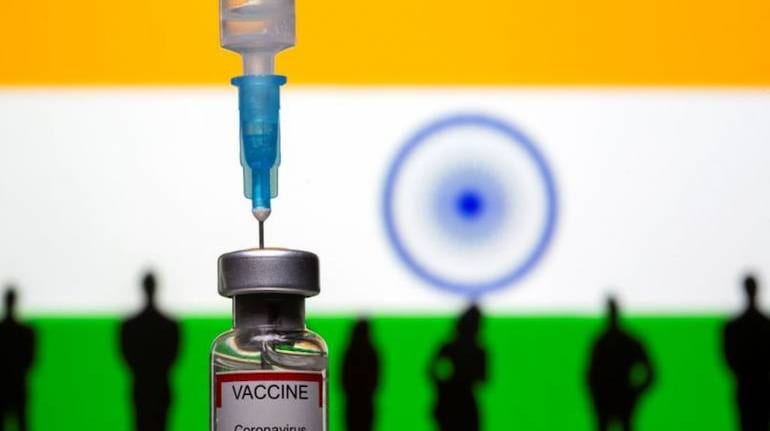



Health and Family Welfare Minister Mansukh Mandaviya, on September 20, announced that the government would allow the export of COVID-19 vaccines in the fourth quarter of this year, and fulfil its COVAX commitment.
COVAX, or COVID-19 Vaccines Global Access, is a global initiative for the equitable distribution of jabs to people in low-and middle-income countries.
Easing supply situationThe supply situation of COVID-19 vaccines has eased considerably from a huge demand-supply mismatch in Q1FY22. The minister said more than 30 crore doses would be produced in October and more than 100 crores by December-end.
In September, the availability of COVID vaccines increased to more than 20-22 crore doses. Serum Institute of India (SII) is producing over 16 crore Covishield doses per month, and it is working on further scaling up these numbers in the coming months. Covishield is used for 87 percent of India's vaccination.
Bharat Biotech, which manufactures the indigenous Covaxin, produced about 2 crore vaccine doses in August. It has more than doubled the number in September, with the Malur facility in Karnataka and Ankleshwar units coming on stream.
Zydus Cadila has indicated it will be supplying 1 crore doses of ZyCoV-D in October. Sputnik V has lagged behind due to issues of yield. While the supplies of Pfizer, Moderna and Johnson & Johnson will depend on resolving the indemnity stalemate, the approval of Covavax by SII, under licence from Novavax, and Biological E's Corbevax in October-December are good news. SII said it could produce eight crore doses of Covavax per month.
Acceleration of vaccinationIndia has fully vaccinated 80 percent of the healthcare and frontline workers, and has covered 54 percent of the population above 60 years, with over 54.3 percent full- vaccination coverage.
On September 21, India's COVID-19 vaccination coverage stood at 81.85 crores, of which about 20.9 crore people are fully vaccinated. India is currently vaccinating people above 18 years. So far, 64.8 percent of the eligible population has received the first dose of COVID-19 and 25.5 percent have got a second shot as well. India has accelerated its vaccination drive significantly. In 11 days, India completed 10 crore vaccinations.
India had shipped 66 million doses of vaccines overseas through donations, bilateral arrangements, and sales. The exports were halted in April as the country coped with a deadly second wave of Coronavirus.
COVAX has raised more than $10 billion, thus legally binding commitments for up to 4.5 billion doses of vaccine.
But COVAX could only deliver 240 million doses to 139 countries in six months. According to its latest supply forecast, COVAX expects to have access to 1.425 billion doses of vaccine in 2021.
SII alone promised to provide 550 million doses of Covishield to COVAX. The company also received $300 million funding from the Bill & Melinda Gates Foundation.
"If India does not ease export restrictions, the world may not see India as a reliable supplier, which will benefit China, as it is making deeper inroads into low and middle-income countries with vaccine diplomacy," said Prof Amir Ullah Khan, Research Director - Centre for Development Policy and Practice (CDPP).
Export boostAccording to rating agency CARE Ratings, the export opportunities to various African, Asian (excluding China and Japan) and some South American countries (where the pace of vaccination remains very slow) still exist, and it expects to remain greater than 1.25 billion doses.
Furthermore, several countries are considering giving booster doses to their population. This will also add to the present supply opportunities.
"Although Indian vaccine manufacturers are unlikely to get the
premium pricing, of anywhere between $15 and $25 per dose, being enjoyed by US-based multinational companies (MNCs), their average realisation could remain anywhere between $3.25 and $3.50 per dose,” it said.
On an aggregate level (i.e., domestic plus export), CARE Ratings expects a supply opportunity of around $10 billion-$11 billion during the next three years for Indian vaccine manufacturers.
Key risksIndia has fully vaccinated about 18.5 percent of the population, and still has a long way to go. India needs at least 1.2 billion doses more to reach a meaningful level of vaccination coverage to fully open up the economy. Any requirement of a booster dose or a third dose could complicate the situation.
Discover the latest Business News, Sensex, and Nifty updates. Obtain Personal Finance insights, tax queries, and expert opinions on Moneycontrol or download the Moneycontrol App to stay updated!
Find the best of Al News in one place, specially curated for you every weekend.
Stay on top of the latest tech trends and biggest startup news.